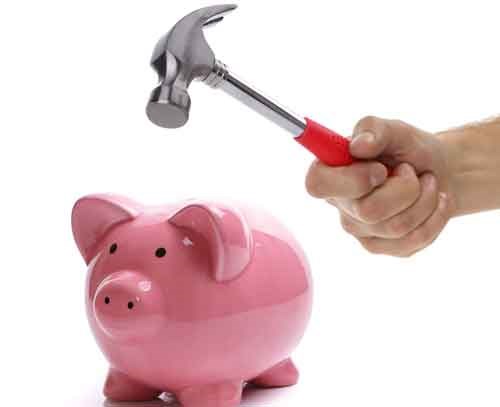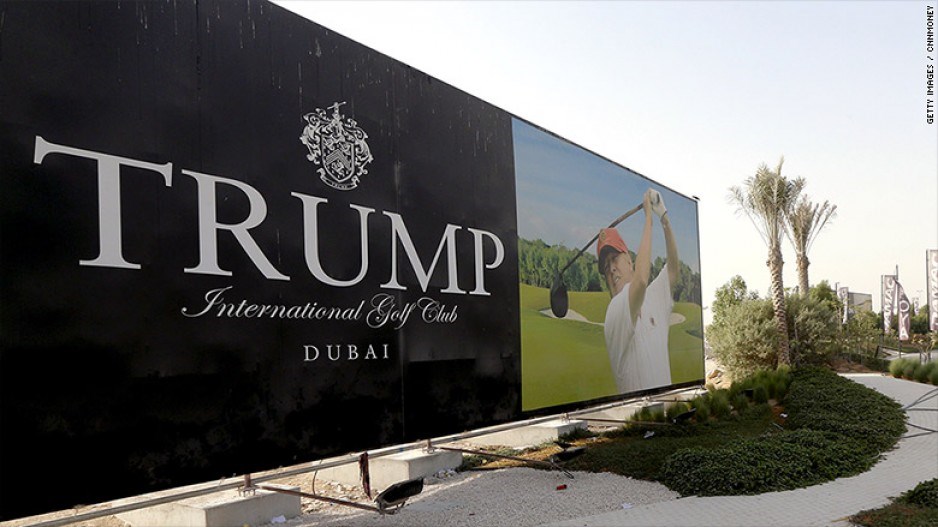So I wonder how that golf course Donald Trump is building in Dubai is going? Not so well, apparently.
Considering how many real estate and other business ventures Trump has in the Middle East, one might think that his instincts as a businessman would temper some of his statements as a wannabe president.
But no, last week the Donald opened his mouth, and out came a genie – a “yuuuge” one. It could be a tough job sticking this one back in the lamp.
Trump said all Muslims should be banned from entering the U.S. until we get this whole radical Islam thing sorted out.
Instead of putting forward any real workable solutions for addressing what is actually a very real problem – Islamism – Trump reached for the broad brush and a bucket of tar.
From Vancouver to Dubai, the reaction has been to remove Trump’s name from his own hotels and golf courses.
In Vancouver, city Coun. Kerry Jang said the Trump International Hotel and Tower – which is till under construction and due to open in June – would become a “beacon of racism” and suggested his name be removed from the building.
Now, the Donald does a fair amount of business in the United Arab Emirates which, in case no one told him, has a few Muslims living there. Trump and a Dubai real estate company, Damac Properties, are building a $6 billion golf course and resort in Dubai.
According to Reuters, Damac has already removed Trump’s name and image from the project’s signage, and several powerful Middle Eastern businessmen and politicians are now distancing themselves from Trump.
One has to wonder if billionaires who think they can buy their way into the presidency (remember Ross Perot and Steve Forbes?) ever give any thought to the damage they may cause their own businesses when they run and fail. Because they always fail.
They fail because they don’t seem to grasp that you can’t just buy the Oval Office. If they were serious about politics, they would start out running for mayor or governor or Congress and then work their way up the ladder like everyone else.
But they’re used to buying influence and think they can just buy a presidency. Having a lot of money can certainly help finance a campaign, but you still have to get people to vote for you.
To do that, people like Trump will say damned near anything if they think it will win support. Don’t they realize that they don’t have a hope in hell of winning, and that when they are done with hobby politics that they may return to a business that they themselves have damaged because of the stupid things they said on the campaign trail?
It’s a good thing the Donald is actually the boss because anyone else who caused this kind of bad press for his business would be told: “You’re fired!”
Desperate measures – negative interest rates



I’m no economist, but you don’t need a PhD in economics to understand that, while debt is fundamental to a functional economy, too much of it can do more harm than good to an economy.
So the Bank of Canada’s announcement this week that it is flirting with the idea of implementing negative interest rates makes me a little uneasy.
This is largely uncharted waters. Canada has never used negative interest rates before. It’s a relatively new unconventional monetary tool that has only recently been adopted by some European central banks, so it’s too early to tell if it will be an effective tool for stimulating economic growth, or a tool that creates a debt problem.
Negative interest rates have been characterized as a “desperate” measure, so the fact the Bank of Canada is considering them suggests the bank is getting worried about the global and Canadian economy.
A negative interest rate is when a central bank starts charging other banks to park their money there. A central bank is, of course, the mothership where smaller commercial banks keep some of their reserves. Those commercial banks earn interest on the money they keep in the central bank.
But when a central bank moves interest rates into negative territory, it means those banks now have to start paying the central bank to park money there. So maybe “reverse interest” is perhaps a more accurate way to describe it.
The idea of negative interest is to discourage banks from hoarding too much money. If they have to pay reverse interest to keep money in a central bank, they may be more inclined to lend more of it out.
If it encourages businesses to borrow more to make the necessary investments to improve their business, that’s one thing. But is it wise to encourage banks to reduce the amount of reserves they hold and encourage consumers to take on more debt?
In September, Canadian household debt hit a new record. That may be good in the short-term, because it increases consumer spending. But there is such a thing as too much debt, both for ordinary citizens and for governments.
Cast your thoughts back to 2008. The worst financial crisis since the Great Depression was in part created by easy money. When you make it too easy for too many people to take on too much debt, that’s a house of cards waiting to collapse.
Unlike in the U.S. and in Europe, no banks collapsed in Canada or needed bailouts. Our more centralized, more conservative banking system insulated Canada somewhat.
Now, maybe Canadian bankers really are sitting on “fat stacks” and need to start lending more of it out.
But the global economy is in a fragile state. When the next financial crisis comes, what happens if Canadians are holding too much debt, begin to default on loans and mortgages, and the banks find that they don’t have enough reserves because the central bank discouraged them from keeping more cash in the bank?
“We don’t need unconventional policies now, and we don’t expect to use them,” Bank of Canada Governor Stephen Poloz said earlier this week. “However, it’s prudent to be prepared for every eventuality.”
The fact the Bank of Canada is even considering negative interest rates tells us something about the fragility of the Canadian economy, which is getting pummeled by low oil and commodity prices. Even if the Bank of Canada doesn't go with negative interest rates anytime soon, one thing seems certain – it won't be raising interest rates any time soon, either.




